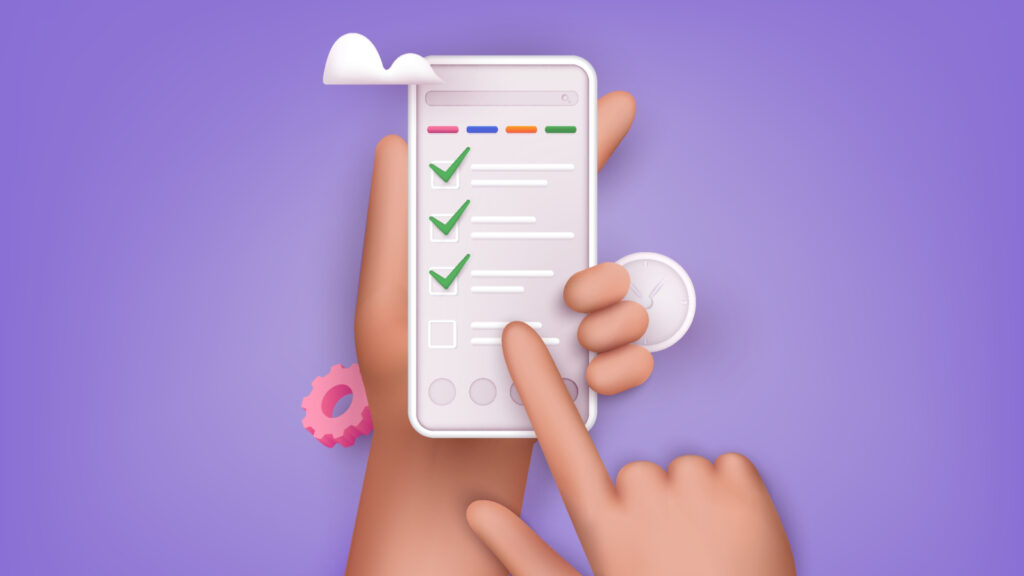How do smart contracts work? What is the future of the blockchain industry, which is loved by businesses and governments worldwide? How do you create a smart contract in just half an hour, and what platforms are better to use? We will tell you the answers to these questions in the following guide.
What is a smart contract in blockchain?
Smart contract technology emerged in 1994 when cryptographer Nick Szabo started writing contracts in computer code. This innovation did not have a dramatic effect because the rest of the world was not ready for this type of technology. However, years later, it significantly influenced blockchain. Thanks to smart contracts, blockchain has developed into a whole industry. Nick explains how this innovation works in his book about smart contracts, written following his first experiments with code. Now smart contract developers are enhancing an existing system operating across many industries.
So, a smart contract is a contract that is implemented when all the specified conditions are applied. A more scientific definition of a smart contract is a programme stored on a blockchain. It is launched when two or more parties fulfil their agreements. Blockchain smart contracts automate work: not requiring any supervision, they are activated when the arrangements are demonstrably fulfilled. They also record all transactions conducted with them, and it is impossible to cancel them. The development of crypto-smart contracts enables this technology to be carried out virtually in all areas where cryptocurrency is being used. For example, allowing instant transactions to be carried out without any intermediaries.
Every smart contract has a release date and time: the stated conditions must be fulfilled by this point. Usually, the contract includes a countdown — an estimate of the time before the closing date. You must fulfil the obligations and document them by this deadline. Another thing you should be aware of is the launch time. This is the date and time when the smart contract begins. It is only set for contracts that are planned for the future.
How does a smart contract work?

Let us imagine that Michael wants to buy something from John. He suggests that John enters into a smart contract to secure the agreement. It will go something like this: “When Michael pays John a specified amount in whatever currency for a particular item, he will receive this item in a particular way.” You cannot change a smart contract after its launch. Michael transfers the money into John's current account, agreed in the smart contract. This action means that the contract is deemed to be fulfilled. Then, the item is sent to Michael. Both parties have completed the transaction without using banks, lawyers, or notaries — they simply signed a contract on the blockchain. This example of a smart contract perfectly captures the essence of this technology.
A blockchain smart contract is decentralised. This means nobody controls it. No one can stop or cancel it. Smart contract platforms safely protect their contracts: they are near impossible to hack because they are based on a blockchain. Sometimes, on unverified networks, a really stupid digital smart contract bug may occur; this happened, for example, with the blockchain startup MonoX Finance. The hackers were able to find a small bug in the code. Given this, they artificially inflated the value of MONO coins, which they were then able to cash out. Smart contract auditing helps to prevent this type of situation.
How do you create your own smart contract?
- Connect to the network where you will create your contract.
Most commonly, developers prefer Ethereum smart contracts — they are simple and well-known. You can use a free account on any blockchain developer platform. - Create an application and an access key for it. This will allow you to start working on the test network.
For example, if you are using Ethereum, you can choose Goerli as your test network. - Create an account in the blockchain where your smart contract will be based.
This could be Ethereum, Polka dot (DOT), Ripple (XRP), Tron (TRX), Kirby (KBY), etc. Switch to the test network you selected in the previous step. Get coins or fragments of coins in the blockchain you register on. - Create a smart contract folder and download the software development environment for the blockchain of your choice.
For Ethereum, it will be Hardhat. Set up a project on this network, select “Empty File”, and create some folders for your code. - Write the contract code.
We will not provide you with a detailed code here — it is too large, and you can find it online. - Connect your accounts in the blockchain management systems from the previous steps to the smart contract.
This is where you will need the key from step two. - Develop the smart contract.
Create a script to launch it in a new folder (code again — ready-made examples are easily searched for using keywords), and then try activating it. The activation signal will look something like this: Contract deployed to address…
To simplify the process, you can turn to the Chainlink service, which hosts some smart contracts. It is quite popular with beginners who have not yet created contracts from scratch.
Smart contract usage examples

How are smart contracts used in real life?
1. Financial technologies.
Smart contracts are used extensively in decentralised financial applications. They offer an alternative to normal banking services: they rapidly carry out transactions, issue statements and certificates, and enter into agreements between users. Simultaneously, smart contracts do not need to be supervised by an expert (if configured correctly.) This saves banks and credit institutions hundreds of millions of dollars a year. Likewise, smart contracts provide transaction transparency and help you send and receive money anytime, at night, and even during weekends. Even though they have moved into the digital age, traditional banks cannot yet boast about having such flexibility. Therefore, billionaires are investing in a new field. Even the best minds in Silicon Valley believe in smart contracts, so the money raised allows the industry to develop in leaps and bounds.
2. NFT.
The ecosystem of selling non-interchangeable coins (those that only exist in one piece and are a long-term investment) is estimated at billions of dollars. Most frequently, buyers and sellers use smart contracts to complete a transaction. Contracts are also built into NFT games: players can pay to interact with objects or to purchase in-game equipment using Bitcoin smart contract technology. Ethereum can replace Bitcoin, as so many contracts are still written using this blockchain and the Solidity programming language.
Smart contracts in NFT-enabled games “protect” the user's purchases and help transfer objects to other game universes. They also enable you to sell NFTs which are no longer of interest to you and then record the history of digital asset ownership. Contracts work inside and outside games as NFTs have value anywhere in the metaverse.
3. Legal industry.
Smart contracts are identical to legal contracts. Therefore, they are most evident in the legal industry. Blockchain technology is used in companies that want to automate the legal procedure as much as possible, saving their budget for legal services and protecting themselves from the risks of the non-execution of contracts by the contractor. So, for example, Cardano smart contracts are used by businesses to set aside (in other words, freeze) the full amount for a product or service from a payee and subsequently collect it after all obligations from the other party are fulfilled. This legal agreement version works like a dream. Its counterparts, smart contracts on different blockchains, are already used by US state governments in the legal industry. In Arizona, for example, entrepreneurs are officially allowed to create agreements using smart contracts.
4. Real estate.
You will find that everything is transparent here: a smart contract records when a property is purchased and information about the owner. However, the world is changing. Currently, you can register information about selling a share in real estate with a smart contract by tokenising the property and then splitting the tokens. Examples of this can be found on the SolidBlock platform, created specifically for property owners registering their transactions through the blockchain. The technology has already been adopted in Georgia. Since 2016, one of the state departments of this country has been using a register of land rights developed using blockchain and smart contracts. A similar project was recently launched in the United Arab Emirates, one of the countries embracing innovative technologies worldwide. Therefore, the fees for conducting a transaction, closing it, and other payments to brokers and notaries in the UAE are frequently not charged: the capabilities of these professionals are acquired by a smart contract written in just half an hour.
Experts believe that blockchain-based contracts (for example, ADA smart contracts) can potentially transform the rental and mortgage market. In the case of rentals, the contract can be completed monthly and be valid indefinitely until it has been forced to close. This equates to automatic payments at the bank, although with a greater guarantee for the property owner to receive the funds. In the case of a mortgage, a smart contract can track the outstanding debt payment, calculate the minimum the borrower must pay over a certain time, and alert the bank that the next payment has not been received. Of course, the contract will not freeze the entire amount for the property — the debtor does not have it yet. But it will help both parties in the transaction to save money: the bank will be certain that the lender is verified by the blockchain according to certain characteristics, and the individual who has taken out the mortgage does not have to pay additional interest and fees other than those already agreed upon. In addition, of course, there is no need to pay for legal advice because the smart contract takes care of the entire verification process.
5. Enterprise management.
In 2017, a bill was established in Delaware to allow blockchain-based businesses to be created and managed using smart contracts. This has opened many new doors for innovation-oriented businesspeople. This is how decentralised autonomous organisations emerged worldwide — businesses whose ownership shares are outlined in smart contracts. Within these companies, corporate structures are automatically implemented by the blockchain. For example, the accounting department in these organisations does not have to recalculate administrative expenses: they simply do not exist because companies no longer have to rent offices, check contracts with contractors and suppliers, manually calculate salaries, transfer them to employees, etc. On the contrary, the whole practice lies on the shoulders of smart contracts (or the code).
6. Machine learning and innovative technologies.
Blockchain and associated technologies facilitate the complex computing tasks faced by machine learning software developers. Smart contracts are used to create artificial intelligence and incorporate it into existing services. They can process data, ensuring the safety of analysis results, and integrate into other systems with their subsequent complication. Therefore, smart contracts can be applied in investment, risk assessment and even price prediction within a volatile market. Contracts in machine learning have nothing to do with crypto — here, they simply “outsource” a huge amount of developer work.
Smart contract examples
This technology's introduction into legal procedures is the most common example of smart contract usage. In addition, it is used for crypto payments in exchanges, the sale of NFTs, and the purchase and sale of real estate. These represent the simplest ways to exploit the potential hidden in smart contracts in today's world. More sophisticated versions of smart contracts can be found within corporate systems seeking to automate routine tasks.
Smart contract platforms

The list of smart contract platforms includes the world's most popular cryptocurrencies: Ethereum, Polkadot, Hyperledger, Stellar, and Tezos. Furthermore, smart contracts work on both Bitcoin and other altcoins (alternative coins, any coins other than BTC).
Ethereum smart contracts
Smart contracts on Ethereum are representative of the modern crypto market. Ethereum, the world's second-largest crypto by capital, was created in 2013 specifically to further develop smart contracts. Now, every other contract is formed on this cryptocurrency blockchain. As a result, thousands of applications help users obtain low-cost loans and other financial services and enter into agreements with almost any amount of conditions.
Bitcoin smart contracts
The Bitcoin smart contract exists on a separate blockchain from the cryptocurrency. It uses the same proof of transfer or work as for the operation of bitcoin. Still, it does not interfere with the crypto world in any way. These contracts allow users to borrow in stablecoins and enter into complex agreements with multiple contractors and numerous variables. As the primary asset (the so-called “gas”), the developers use the Stacks coin; it pays for running a smart contract to miners who authenticate it.
Cardano smart contracts
You can create smart contracts in the Cardano network since 2021. They are hosted on Cardano Alonzo, part of the network dubbed the “Ethereum Killer”. Each contract comprises two levels: settlements (the level of transfers) and agreements (the level for creating new contracts). Due to this division, transactions are conducted quickly and efficiently. Furthermore, the smart contracts agreement matches the blockchain's consensus — we are talking about Proof-of-Stake, which allows you to opt out of mining.
ADA smart contracts
ADA smart contracts are the same as Cardano ones. However, their features are superior to contracts running on Ethereum, as the developers of ADA wanted to enhance the ETH network and surpass its capacity from the outset. Therefore, two levels appeared in ADA smart contracts, while Ethereum still processes both ordinary transactions and contract execution through the same channel. However, this does affect the speed of transactions negatively.
Dogecoin smart contracts
Most recently, at the end of August 2022 to be precise, developers launched Dogechain, a network hosting Dogecoin smart contracts. These contracts work just like all the others already listed in this article. However, the transactions are paid in DOGE, which is quite handy for the owners of this coin. Still, Dogechain is unrelated to the coin itself. It is a third-party product and, therefore, should be used with caution.
Smart contract audit

What is a smart contract audit? This is a thorough analysis of a smart contract and its code to locate a bug or confirm that the contract is fully secure. An audit should be performed every few months or more often, depending on the volume of smart contracts you are working with. Companies in the financial industry, for example, have audits regularly. After the audit, the specialists who conducted it issue a detailed report and suggest ways to solve the problems they found. You can then amend the code (or not, depending on what the auditors find) and wait for the next report.
Basically, this is all you need to know about blockchain-based smart contracts. We hope you now understand how they work and why today it is one of the world's most convenient and promising technologies!